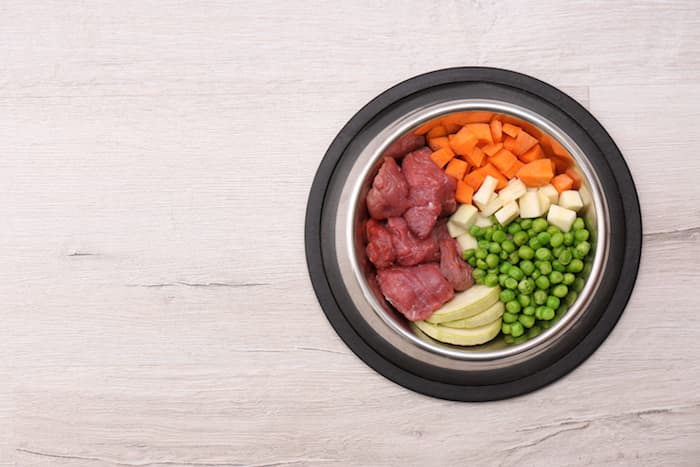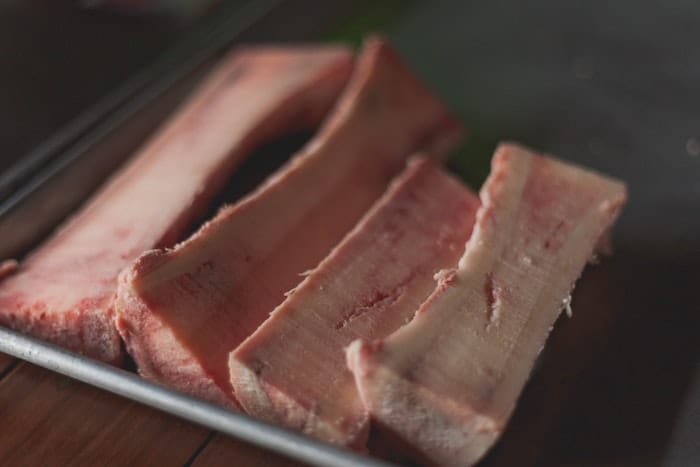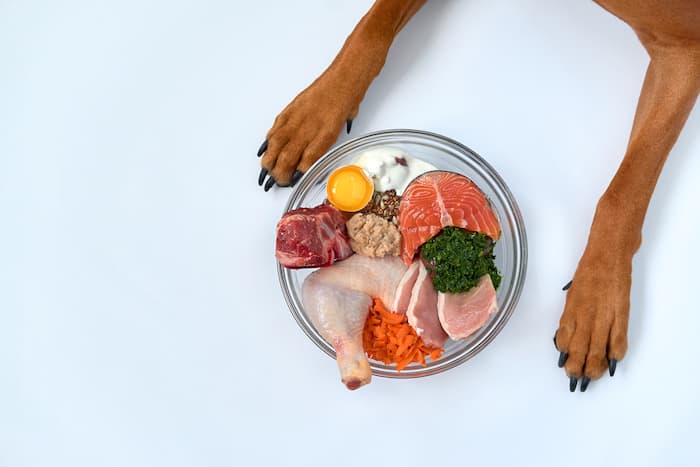As a fur parent, you consider your pet a member of your family. To keep them healthy and strong, you go out of your way to make sure you get everything right, particularly their diet.
In your hunt for the healthiest diet for your beloved pet, you’ve probably heard about the raw food diet. This trend has sparked thousands of discussions and reviews among dog owners. If you’re curious about it, this article shares the basics, including its benefits. You can also learn how to safely transition your pet to this diet.

What Is Raw Food Diet
A raw food diet for pets differs from the regular kibble-based pet food. As its name implies, raw pet food is not baked or cooked like kibbles nor heat-treated and canned like wet food. Raw food is based on fresh, high-quality animal sources that are either frozen or freeze-dried to lock in the natural ingredients.
Raw pet foods often utilize whole animals including bones, meat, and vital organs without any heat-intensive method that can destroy the nutrients and vitamins in the meat. As such, the nutritional balance of carbs, protein, and fat in a raw pet food diet is much closer to the natural diet of your pets’ ancestors.
Consider getting multivitamin dog chews.
Since you’ll be feeding your pet fresh, unprocessed meat, you want to choose high-quality and top-grade food. Also, you don’t want to buy bulks of raw food to ensure freshness and safety for your pet’s consumption. You might want to go for raw food providers offering weekly subscriptions like this weekly raw dog food subscription from CDK9. Each subscription has seven portions of raw food based on the recommended daily intake for your pet’s weight and age.
Benefits Of Raw Dog Food Diet
The theory regarding raw feeding is that dogs have been eating raw food longer than they’ve been provided with mass-produced kibbles and canned meals. Ultimately, dogs are carnivores and will benefit more from a protein-based food like raw food than a kibble-based diet with excess gluten and carbs.
Thus, transitioning your pet from commercial kibbles to a raw food diet can provide numerous benefits. Essentially, this diet helps in the following aspects:
- Stabilizing blood sugar levels
- Losing excess weight
- Improving dental health
- Boosting vitality and energy
- Building muscle mass
- Promoting digestive health
- Supporting a healthier coat and skin
A growing number of pet parents claim that after transitioning into raw food diet, their pets have significantly benefited in terms of their overall health, quality of life, and more.

4 Tips To Consider When Raw Feeding
- Consult Your Vet
What worked for other pets may not work for yours. So before you feed your pet raw food, you need to ask your vet first. This ensures the raw food ingredients you’re planning to feed him won’t aggravate any allergies or medical conditions your dog may have or cause a stomach upset and vomiting.
- Practice Safe Prepping And Handling
In general, vets require meticulous care, preparation, and sanitation of raw dog foods. After all, raw pet food comes with an increased risk of exposing you, your family, and your pet to harmful bacteria if not properly handled. To minimize cross-contamination, you need to take some time to learn how to properly prepare raw dog food.
Make sure to separate all raw pet food from your food. Never wash raw meat since it can increase the spread of bacteria and, consequently, the risk of cross-contamination. By contrast, you can wash raw fruits and veggies to remove unwanted residue.
Always keep the raw food in the freezer until you’re ready to feed them to your pet. You can leave raw food out for 20 minutes before storing them again. Always wash and disinfect your hands before and after preparing the meal. Don’t forget to wash your pet’s food bowls after every use to remove harmful bacteria.

- Determine The Right Ratio
The raw food diet is all about getting the perfect ratio of several raw food ingredients for a balanced meal. Experts recommend an ideal ratio of 70% raw meat, 10% soft raw bones, 7% veggies, 5% raw liver, 5% organ meats such as green tripe and kidneys, 2% nuts or seeds, and 1% fruit.
- Transition Slowly
Transitioning your pet to raw food depends on if you want to incorporate more raw foods into their diet or want them to eat a completely raw diet. The key word here is slowly because you want to make sure you are not feeding your pet something that they may be allergic to. The best way to change your pet’s diet is to tweak the ratio between the old and new food for 7–10 days or more if your pet’s stomach is sensitive.
Takeaway
Raw food diet comes with numerous health benefits for your dog. As long as you’ve consulted your vet and done your research, changing up your dog’s diet to a raw diet is a sensible thing to do. If all goes well, changing your dog’s diet to raw food can help them live a longer, healthier life. And with the above guide, trying to feed your pet raw food becomes less daunting.
